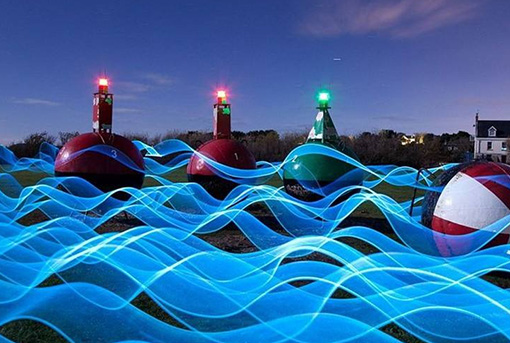How does linear lighting occur?
The occur of linear lighting began in the 1950s, mainly in industrial settings. The manufacturing environment first uses linear fluorescent tubes, like T12 and T16. In the 1970s, this technology began to enter home use. Traditional linear lighting has existed for a long time, but there are also some production problems. For example, the surface area illuminated by a linear tube is larger, which is not always what we want; the lamp has more requirements for sockets on both ends. This transformation occurred in the 1970s. As the demand for linear lighting in small workshops and garages as well as home interiors and retail stores has increased, this requires lower costs and more decorative options. Starting in the late seventies, puff linear lamps became quite popular. Almost every family and apartment of specifications has a puff linear lamp, especially in the kitchen. Many manufacturers offer a product that resembles a wood decoration of a picture frame. If you walk into a deli in New York or a hardware store in Chicago, you might see old-fashioned linear lights. In the early days, these lights were small and cheap. Their function is only lighting, not decorative, and people do not consider the quality of lighting. Even modern companies may use line lights in order to reduce prices because they are the most economical solution.
What are the characteristics and benefits of modern linear lighting?
In fact, the original linear lights have been mostly relegated to garages, laundry rooms and other practical spaces. For example, in retail, everyone is looking for more beautiful lamps and better light. The office mixes direct and indirect lighting to achieve a more even distribution. Color temperature has an important effect on psychology, which cannot be ignored. For example, a low-cost store may use 4K lighting to encourage customers to quickly buy products and then pay, while another store may use 3K lighting to provide a more pleasant experience. The linear lighting market is still huge today and will not disappear anytime soon. The difference now is that linear architectural lighting and LED technology have expanded the application range of linear lamps. With the improvement of appearance and performance, this industry will continue to develop. The old traditional housing is being abandoned, new materials are used, and more advanced technology is adopted, linear lighting is also more compact and more efficient.
Where is the future of linear lighting?
The aesthetics is fixed at this point, but in terms of performance, there is a huge improvement. Modern technology has not only made it more efficient, it has also become easier to install and fine-tune. In the past, customers had to use related control systems for each product. But now, products have built-in controls, which means they are pre-programmed for a certain area when they are installed. In the future, control will be the next "spoiler".


